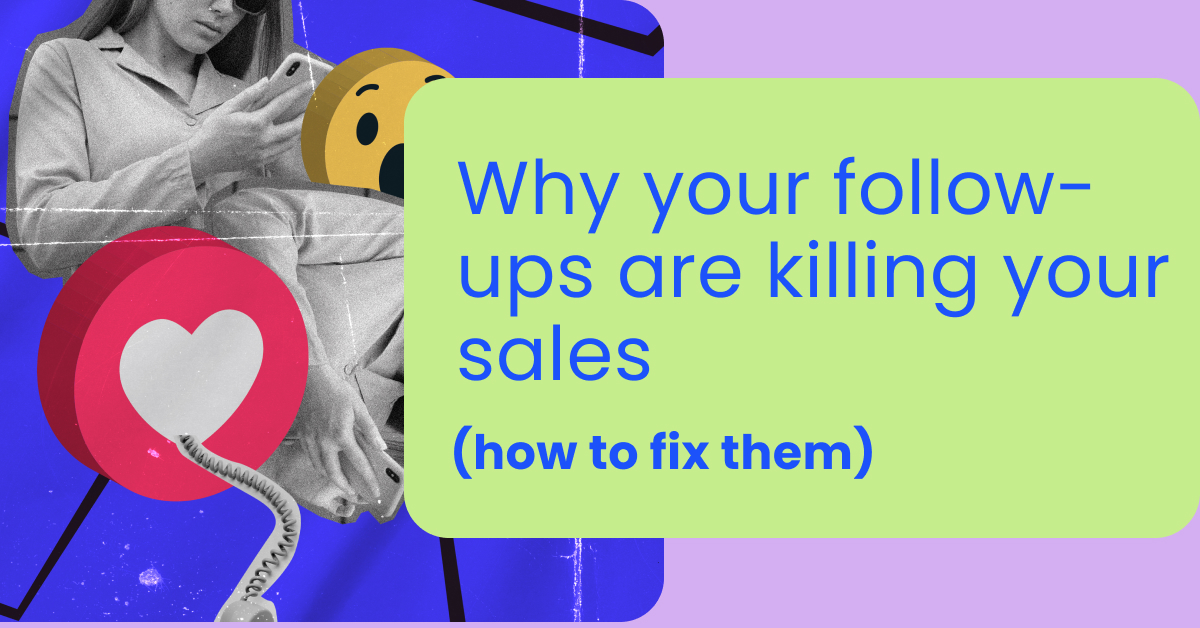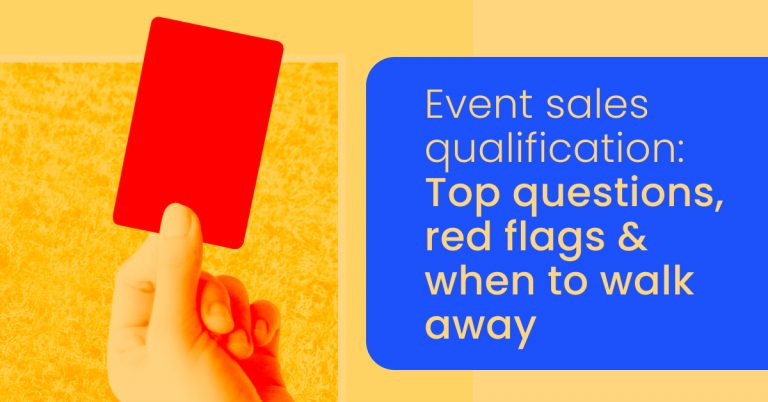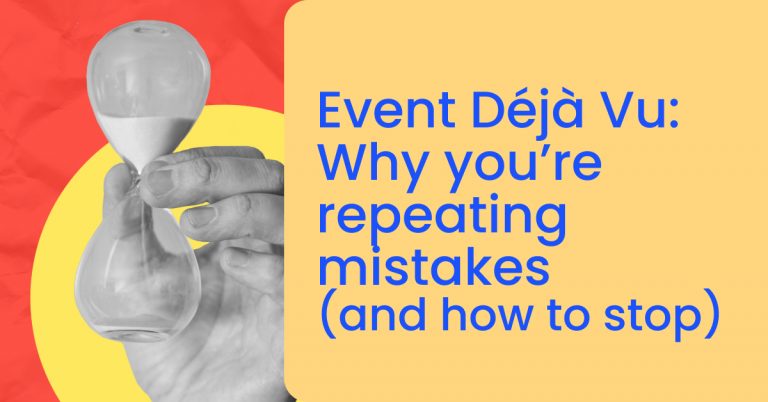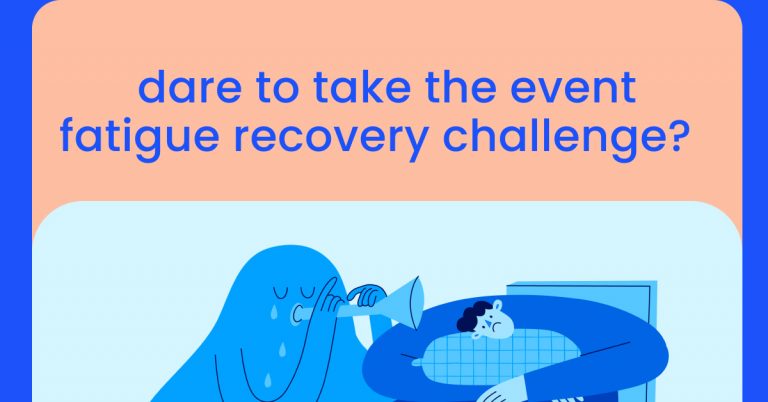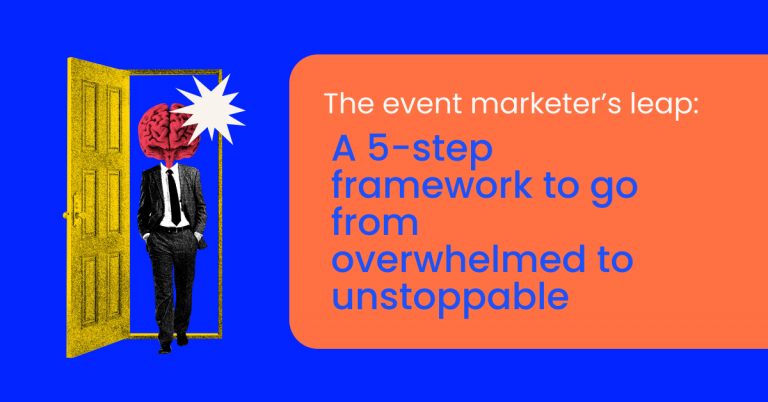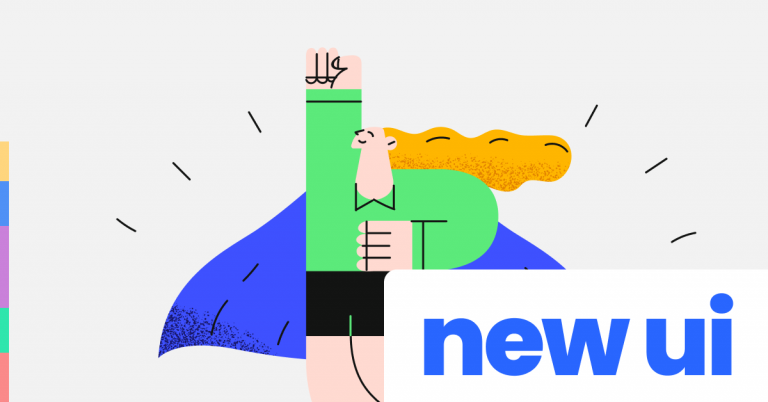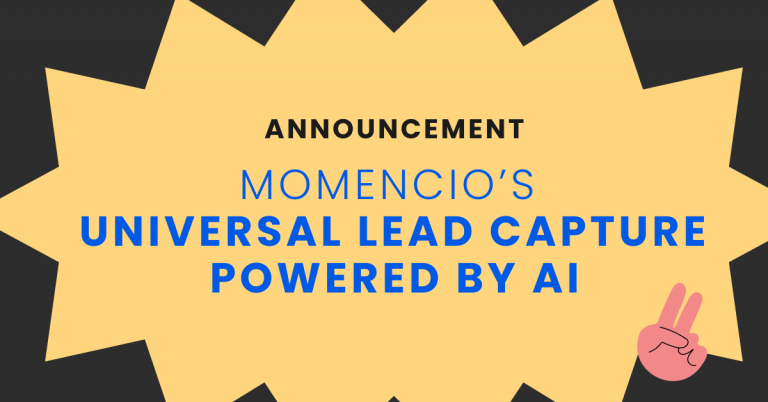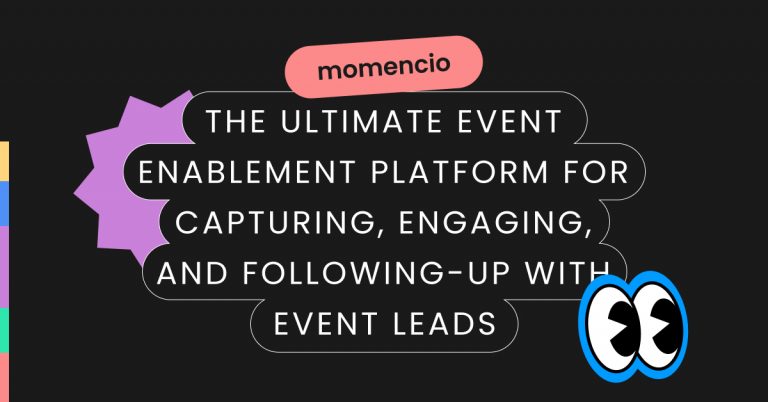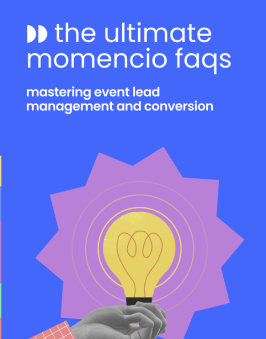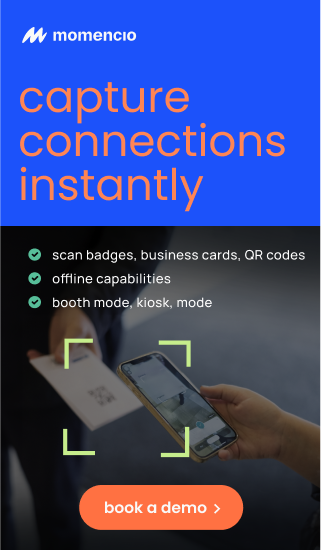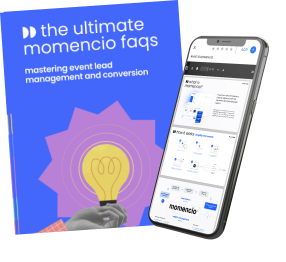A great sales pitch means nothing if the lead is left unattended. Follow-ups are where deals are won or lost, yet they remain one of the most overlooked and mismanaged aspects of the sales process. Some sales teams give up too soon, while others push too hard, overwhelming prospects with relentless outreach. Striking the right balance is what separates top-performing sales teams from those struggling to close deals.
Consider this: 44% of sales reps stop following up after one attempt, yet 80% of sales require at least five follow-ups. That means a massive percentage of potential deals are lost simply due to a lack of persistence. At the same time, poorly timed, impersonal, or repetitive follow-ups can turn a warm lead cold in an instant.
Mastering follow-ups isn’t just about persistence—it’s about timing, personalization, and delivering real value. The most successful teams know how to blend automation with human connection, use multiple communication channels, and refine their strategies based on actual data. When done right, follow-ups don’t feel like an obligation; they become a seamless part of the buyer’s journey, leading to stronger relationships and higher conversions.
What separates effective follow-ups from those that kill deals? Let’s break it down.
TL;DR: Most sales reps give up after just one or two follow-ups, but research shows that 80% of deals require at least five follow-ups to close. Poor timing, generic messaging, and a lack of multi-channel engagement are killing conversions. To fix this, businesses must:
- Follow up persistently but strategically.
- Use multiple channels like email, LinkedIn, SMS, and video.
- Personalize outreach based on buyer intent and engagement.
- Automate for consistency but keep high-value touchpoints human.
- Track, test, and refine follow-up cadences based on real data.
By improving follow-up strategies, sales teams can boost engagement, shorten sales cycles, and increase revenue.
The hidden cost of bad follow-ups: How many deals are slipping away?
Every ignored email, every missed phone call, and every generic follow-up message comes at a price—lost revenue. The reality is that bad follow-ups are one of the biggest reasons deals stall or disappear altogether. According to HubSpot, 60% of customers say no four times before saying yes, yet 48% of salespeople never make a second contact. That means nearly half of sales reps are walking away from prospects who might have converted with just a little more persistence.
The financial impact of poor follow-ups
Lost deals don’t just affect revenue; they also inflate customer acquisition costs (CAC). Companies spend thousands of dollars generating leads through events, digital marketing, and sales outreach, yet a weak follow-up strategy renders much of that investment useless. 35-50% of sales go to the vendor that responds first, meaning slow or inconsistent follow-ups can result in deals being handed directly to competitors.
Why do deals slip away?
- Lack of persistence: Most sales reps quit after one or two attempts, even though most deals require multiple touchpoints.
- Generic, uninspired messaging: Prospects ignore follow-ups that feel templated and lack personalization.
- Failure to provide value: Following up just to “check in” doesn’t move deals forward—prospects need new insights or solutions.
- Bad timing: Reaching out too soon (or too late) can make your message irrelevant.
- Ignoring multi-channel outreach: Relying solely on email when prospects might respond better to LinkedIn, phone calls, or SMS is a missed opportunity.
The silent sales killer: unanswered follow-ups
Bad follow-ups don’t just cause leads to slip away; they erode trust and damage brand perception. A poorly timed or impersonal message can make prospects feel like they are just another name in a database rather than a valued potential customer. Worse yet, no follow-up at all can make them feel abandoned, leading them straight into the hands of a competitor who is more proactive.
How to fix it
The first step to fixing bad follow-ups is consistency. Implementing a structured follow-up process—such as a cadence of emails, calls, and social touches over a set timeframe—ensures that no lead falls through the cracks. Personalization is equally important: a follow-up that references the prospect’s specific pain points or past interactions is far more likely to get a response than a generic message.
In the next section, we’ll break down the biggest follow-up mistakes that are actively killing your conversions—and how to avoid them.
The top sales follow-up mistakes killing your conversions
Following up is a delicate balance between persistence and value. When done wrong, it can drive prospects away rather than bringing them closer to a sale. Here are the most common follow-up mistakes that may be sabotaging your conversions—and how to fix them.
1. Giving up too soon
One of the biggest reasons deals are lost is that sales reps stop following up too early. Research shows that 80% of sales require at least five follow-ups, yet nearly half of salespeople give up after just one attempt. Prospects often need multiple touchpoints before they feel comfortable making a decision. Instead of stopping after one or two attempts, implement a structured follow-up cadence that spans multiple channels—emails, phone calls, LinkedIn messages, and even SMS.
2. Sending generic, one-size-fits-all messages
Prospects can tell when they receive a templated, mass email. The “Just checking in” message is one of the biggest offenders—it adds no value and doesn’t move the conversation forward. Instead, personalize every follow-up by referencing specific pain points, previous interactions, or shared industry challenges. Use data-driven insights to tailor messaging that resonates with each lead.
3. Overwhelming prospects with too many follow-ups in a short time
While persistence is important, too much follow-up can have the opposite effect. Bombarding a prospect with daily emails or calls can feel pushy and intrusive. The key is to space out follow-ups strategically, using a mix of channels and touchpoints. A well-planned cadence might include an initial email, a LinkedIn connection request, a follow-up call, and a value-packed resource before circling back.
4. Focusing on your needs instead of theirs
A common mistake in follow-ups is making it all about the salesperson’s goals rather than the prospect’s needs. Avoid messages that focus only on closing the deal—such as “Are you ready to move forward?”—without reinforcing why your solution matters to them. Instead, provide additional insights, case studies, or industry research that educates and nurtures the lead toward a decision.
5. Neglecting multi-channel outreach
Many sales reps rely solely on email for follow-ups, but not all prospects prefer that channel. Some respond better to LinkedIn messages, while others prefer a direct phone call or even an SMS. Diversifying your follow-up strategy ensures that you meet prospects where they are most comfortable. Studies show that multi-channel outreach increases response rates by 25% compared to email-only strategies.
6. Poor timing and not respecting the buying cycle
Timing is everything in sales follow-ups. Reaching out too soon—before a prospect has had time to digest your initial pitch—can make you seem impatient. On the flip side, waiting too long allows competitors to swoop in. Using data-driven timing insights can help determine the best moment to reconnect. A follow-up within 24 hours of an initial conversation keeps momentum going, while subsequent check-ins should align with the prospect’s buying cycle.
7. Not tracking and measuring follow-up effectiveness
Sales teams often fail to analyze their follow-up efforts, leaving them blind to what’s working and what’s not. Without tracking email open rates, response rates, and conversion metrics, it’s impossible to refine the approach. Using CRM tools and sales engagement platforms helps identify patterns and optimize future follow-ups for better results.
How to fix these follow-up mistakes
To turn follow-ups into conversions, sales teams need a structured, data-driven approach. Implementing a follow-up cadence that includes personalized messaging, multi-channel engagement, and strategic timing increases response rates and ultimately closes more deals. By avoiding these common mistakes, businesses can transform follow-up strategies into a powerful sales accelerator.
The science of timing: When and how often should you follow up?
Timing can make or break a follow-up strategy. Contacting a lead too soon can feel intrusive, while waiting too long gives competitors an opportunity to step in. Finding the sweet spot for follow-up timing requires understanding buying cycles, lead intent, and the psychology of decision-making.
1. The 5-minute rule: speed matters
50% of buyers go with the vendor that responds first. Additionally, leads contacted within five minutes of an inquiry are 100 times more likely to convert than those contacted after 30 minutes. This means that the first follow-up—whether it’s an email, phone call, or LinkedIn message—should happen as soon as possible after initial engagement.
2. How often should you follow up?
A well-structured follow-up cadence ensures persistence without becoming annoying. Here’s an effective timeline for a new lead:
- Day 1: Initial follow-up within 5–15 minutes.
- Day 2: Follow-up email with additional value (e.g., case study, testimonial).
- Day 4: LinkedIn connection request with a brief message.
- Day 7: Follow-up call or voicemail if no response.
- Day 10: Email with a limited-time offer or exclusive content.
- Day 15+: Move to a longer-term nurture sequence with spaced-out touchpoints.
3. Know your prospect’s buying cycle
Not all prospects are ready to buy immediately. Understanding where a lead is in the buyer’s journey helps determine how aggressively to follow up.
- Awareness Stage: Provide educational content and industry insights rather than pushing a sale.
- Consideration Stage: Offer case studies, comparison guides, and product demos.
- Decision Stage: Focus on urgency, testimonials, and direct calls to action.
4. The danger of following up too much (or too little)
While multiple follow-ups are necessary, overwhelming prospects with daily emails or calls can backfire. Conversely, waiting too long risks losing them altogether. 80% of sales require five or more follow-ups, yet most reps stop after two. The key is consistent, spaced-out communication across multiple channels.
5. The power of strategic touchpoints
The best follow-ups aren’t just reminders—they add value. Instead of repeatedly asking if a lead is ready to buy, mix up your approach with:
- Industry trends or insights that align with their business challenges.
- Exclusive offers or event invitations.
- Personalized video messages that stand out from text-based outreach.
6. Testing and optimizing follow-up timing
No one-size-fits-all rule applies to follow-ups, which is why A/B testing different cadences can help fine-tune effectiveness. Track open rates, response times, and conversions to adjust your timing strategy accordingly.
Personalization vs. automation: striking the right balance
With so many leads to manage, it’s tempting to rely solely on automation for follow-ups. But the most effective sales strategies blend automation for efficiency with personalization for engagement. The key is knowing when to automate and when a human touch is necessary.
1. Why personalization matters in follow-ups
Studies show that personalized emails generate 6x higher transaction rates than generic ones. Prospects are bombarded with sales outreach every day, and an impersonal, cookie-cutter email is easy to ignore. Personalization makes follow-ups stand out by showing that you understand their pain points, business needs, and goals. Effective personalization includes:
- Referencing specific details from past conversations.
- Tailoring messages based on industry challenges.
- Including the prospect’s name, company, and role.
- Recommending solutions that fit their unique needs.
A well-personalized follow-up makes a lead feel valued rather than just another entry in a sales pipeline.
2. Where automation fits in
While personalization drives engagement, automation ensures consistency and scalability. Sales teams can’t manually send emails to every lead, so automated workflows help maintain momentum. Key areas where automation is effective include:
- Drip campaigns that nurture leads over time with valuable content.
- Reminder emails for scheduled demos or meetings.
- Follow-up sequences triggered by prospect behavior (e.g., opening an email, clicking a link, or attending an event).
- Lead scoring automation, which prioritizes prospects based on engagement levels.
Automation doesn’t replace relationship-building—it supports it by ensuring timely, structured outreach.
3. Striking the right balance
The best follow-up strategies combine automation and personalization in a way that feels authentic yet efficient. Here’s how to strike that balance:
- First touch = highly personalized: The first follow-up should be 100% customized, referencing specific interactions or needs.
- Middle of funnel = Automated nurturing: Use automated sequences to educate, provide value, and keep leads engaged.
- Final stages = Human engagement: When a lead shows buying intent, shift back to manual, one-on-one follow-ups to guide them through the decision-making process.
4. Personalization at scale: using technology wisely
Sales teams can personalize follow-ups at scale using AI-driven tools that analyze data and suggest relevant insights. Some best practices include:
- Dynamic email templates that pull in custom data fields.
- AI-assisted recommendations for the best content to share with each lead.
- CRM integrations that provide reps with conversation history for better context.
When used correctly, technology can enhance personalization rather than replace it.
5. Common pitfalls to avoid
Many sales teams fall into one of two extremes—too much automation (robotic, impersonal messages) or too little automation (inefficiency and inconsistency). The mistakes to avoid include:
- Over-reliance on templates without customization.
- Failing to track engagement metrics to adjust follow-ups.
- Sending irrelevant content that doesn’t align with the prospect’s stage in the buying cycle.
By finding the right mix of automation for efficiency and personalization for connection, sales teams can optimize follow-ups for higher response rates and more conversions.
Beyond emails: Creative follow-up tactics that get responses
While email is a cornerstone of follow-ups, relying solely on it can limit engagement. 75% of sales emails never get opened, and even when they do, a generic message is often ignored. To stand out, sales teams need to think beyond the inbox and leverage creative, multi-channel approaches that increase response rates and build stronger relationships. Here’s how to make follow-ups more impactful.
1. Leverage LinkedIn for meaningful engagement
LinkedIn is a powerful tool for B2B follow-ups, but most salespeople misuse it by sending cold pitches. Instead of pushing a sale immediately, use LinkedIn to:
- Engage with a prospect’s content by commenting on their posts before reaching out.
- Send personalized connection requests referencing something specific about their business.
- Share valuable insights through direct messages rather than just asking for a call.
- Post relevant industry updates to stay top-of-mind in their network.
By building rapport on LinkedIn before asking, sales reps increase their chances of getting a response.
2. Send a personalized video message
A personalized video is far more engaging than a text email. Videos in sales emails increase reply rates by 26%. Tools like Vidyard or Loom allow sales reps to create quick, customized messages that:
- Address the prospect by name and company.
- Reference a recent challenge or need they mentioned in prior conversations.
- Showcase a demo or insight that adds immediate value.
The personal touch of video makes a follow-up feel genuine and memorable, increasing the likelihood of a response.
3. Use SMS or WhatsApp for high-intent leads
For warm leads who have already engaged, a well-timed SMS or WhatsApp message can drive action faster than email. Research shows that text messages have a 98% open rate, compared to 20% for emails. Best practices include:
- Keeping messages concise and professional.
- Using SMS for reminders about scheduled meetings or deadlines.
- Sending a quick value-driven follow-up after an event or demo.
Since SMS is more personal, it should be used strategically for high-intent prospects rather than cold outreach.
4. Mail a physical thank-you note or gift
A handwritten note or small gift stands out in an age of digital overload. Sending a personalized thank-you card or a relevant industry book can leave a lasting impression. Ideal moments for this include:
- After a successful meeting or event.
- To re-engage a prospect who has gone cold.
- To celebrate a business milestone for your prospect.
This extra effort humanizes your brand and strengthens relationships in a way that digital communication alone cannot.
5. Invite prospects to an exclusive event or webinar
Instead of repeatedly asking for a follow-up meeting, offer prospects value by inviting them to an exclusive event, workshop, or webinar. This could be:
- An industry roundtable with expert speakers.
- A private product demo session.
- An executive networking event.
These invitations keep the conversation going without pressuring the lead into an immediate sales discussion.
6. Gamify follow-ups with interactive content
People love interactive experiences. Instead of a plain email, try follow-ups that include:
- A short quiz or survey related to their business challenges.
- A personalized ROI calculator to demonstrate value.
- A “choose your own journey” email, where prospects click options based on their interests.
By making follow-ups more engaging, you encourage higher interaction rates and create a more enjoyable experience for prospects.
7. Utilize retargeting ads to stay top-of-mind
Even if a prospect doesn’t respond to a follow-up, you can keep your brand in their line of sight with targeted ads on LinkedIn, Facebook, or Google. Retargeting works well when:
- A lead has visited your website but hasn’t responded yet.
- They opened a follow-up email but didn’t reply.
- You want to reinforce key messaging through content-driven ads.
These ads create passive touchpoints that keep prospects engaged between direct communications.
8. Follow up with case studies and customer success stories
Instead of another check-in email, send a relevant success story showcasing how your product or service solved a similar problem. A well-crafted case study includes:
- A relatable challenge that mirrors your prospect’s struggles.
- A clear transformation showing how your solution helped.
- Tangible ROI metrics to reinforce credibility.
This approach shifts the conversation from “Are you ready to buy?” to “Here’s proof that this works”, making your follow-up more persuasive.
Final thoughts: make follow-ups an experience, not an obligation
The best follow-ups go beyond reminders—they add value, build relationships, and create engagement across multiple touchpoints. Whether it’s video, LinkedIn, interactive content, or SMS, the key is to keep follow-ups varied, relevant, and human.
Measuring success: How to optimize and refine your follow-up strategy
Following up is only effective if it leads to conversions, yet many sales teams fail to measure and optimize their efforts. Without tracking the right metrics, it’s impossible to know what’s working and what needs improvement. To maximize results, follow-up strategies should be continuously tested, refined, and optimized based on real data and buyer behavior.
1. Key metrics to track follow-up performance
A great follow-up strategy isn’t just about persistence—it’s about efficiency and effectiveness. Here are the core metrics sales teams should monitor:
- Response Rate: How many prospects reply to follow-ups?
- Email Open & Click-Through Rates: Are emails being read and acted upon?
- Call Connection Rate: How often are calls answered?
- Lead-to-Meeting Conversion Rate: How many follow-ups result in a scheduled call or demo?
- Sales Cycle Length: Does the follow-up strategy accelerate the buying process?
- Win Rate: What percentage of followed-up leads convert into paying customers?
Tracking these metrics provides clarity on which follow-ups are moving deals forward and which ones are being ignored.
2. A/B testing for continuous improvement
The most successful sales teams don’t just rely on one approach—they continuously test different strategies to improve results. A/B testing helps identify which follow-up tactics perform best. Some variables to test include:
- Timing: Does following up within 24 hours vs. 48 hours impact response rates?
- Messaging: Do prospects respond better to concise messages or detailed emails?
- Subject Lines: Which email subject lines increase open rates?
- Call vs. Email: Is direct outreach more effective than email sequences?
- Content Type: Do case studies, video messages, or personalized PDFs get better engagement?
By systematically testing and tweaking strategies, teams can refine their follow-up process and eliminate what isn’t working.
3. Leveraging CRM and sales engagement tools
Manually tracking follow-up performance is inefficient, which is why sales teams need to leverage CRM and automation tools. Platforms like HubSpot, Salesforce, and Outreach allow for:
- Automated follow-up cadences to ensure leads don’t go cold.
- Activity tracking to monitor calls, emails, and interactions.
- Lead scoring to prioritize high-value prospects based on engagement.
- Pipeline analytics to assess the impact of follow-ups on deal progression.
Sales teams that integrate these tools see an average 27% increase in conversion rates, as they provide real-time insights into lead behavior and engagement.
4. Identifying drop-off points in the follow-up process
Even with a structured follow-up plan, leads can still drop off. Analyzing where prospects disengage helps pinpoint areas for improvement. Common drop-off points include:
- Prospects stop replying after initial interest.
- Leads don’t open follow-up emails after a demo.
- A long delay between the first and second follow-up leads to lost engagement.
Addressing these gaps with more targeted messaging, better timing, or additional engagement channels can prevent deals from slipping away.
5. Aligning sales and marketing for data-driven follow-ups
A major reason follow-ups fail is misalignment between sales and marketing. Marketing teams collect valuable insights on lead behavior, but if those insights aren’t shared with sales, follow-ups become generic and ineffective. A strong collaboration ensures:
- Personalized follow-ups based on website activity, downloads, or webinar attendance.
- Marketing-driven retargeting to reinforce messaging after follow-up attempts.
- Consistent messaging across sales and marketing touchpoints.
Companies that integrate marketing data into their follow-up strategy see a 36% higher conversion rate, proving that better alignment leads to stronger results.
6. Optimizing follow-up cadences based on buyer intent
Not all leads require the same level of follow-up intensity. Using intent-based segmentation helps tailor outreach for better results:
- Hot Leads: Prioritize immediate and high-frequency follow-ups (calls, LinkedIn messages, SMS).
- Warm Leads: Use value-driven nurture sequences with insightful content.
- Cold Leads: Place them in a long-term engagement cycle instead of aggressive follow-ups.
Matching the follow-up cadence to the lead’s intent ensures the right level of persistence without overwhelming prospects.
Final thoughts: follow-up strategies should evolve
The best follow-up strategy is never static—it evolves based on data, testing, and continuous improvement. By tracking key metrics, refining tactics through A/B testing, and integrating CRM and marketing insights, sales teams can create a high-performing follow-up process that drives real revenue.
Conclusion
Follow-ups are the bridge between lead generation and revenue. Yet, most sales teams fail to follow up effectively, resulting in lost deals and wasted opportunities. By implementing a structured, data-driven follow-up strategy, sales teams can increase response rates, shorten sales cycles, and close more deals.
Key takeaways:
- Follow-ups should be persistent, but strategic. Most sales require at least five touchpoints.
- Timing matters. Quick responses and well-placed follow-ups increase engagement.
- Personalization drives higher conversions. Tailored messaging outperforms generic templates.
- A multi-channel approach works best. Emails alone aren’t enough—LinkedIn, calls, and SMS improve results.
- Continuous optimization is key. Track metrics, A/B test strategies, and refine your follow-up cadence.
Want to take your follow-ups to the next level? Book a demo with momencio and discover how real-time engagement tracking and automated follow-up workflows can help you close more deals.
Interesting facts from research
Understanding the importance of follow-ups requires looking at real-world data. Here are some eye-opening statistics that highlight why optimizing follow-ups is essential:
- 44% of sales reps give up after one follow-up attempt, yet 80% of sales require at least five follow-ups.
- Sales reps who follow up within 5 minutes are 100 times more likely to connect with a lead than those who wait longer.
- Only 27% of sales emails are opened, and less than 8% receive a response.
- Personalized follow-ups result in a 26% higher reply rate than generic messages.
These statistics reinforce the importance of structured, personalized, and persistent follow-up strategies to maximize conversions.
FAQs
- How many times should I follow up with a prospect?
- Studies show that at least five follow-ups are needed to close most deals, yet many sales reps stop after one or two attempts. A well-structured follow-up cadence should include multiple touchpoints across email, calls, LinkedIn, and SMS to increase engagement.
- What’s the best time to send a follow-up email?
- Research suggests that the best time to send emails is between 8 AM – 10 AM or 4 PM – 6 PM, when prospects are more likely to check their inbox. Additionally, sending emails on Tuesdays and Thursdays tends to yield higher open rates.
- What should I include in my follow-up message?
- A great follow-up email should:
- Be personalized (mention the prospect’s name, company, and past interactions).
- Provide value (case studies, industry insights, or product solutions).
- Include a clear CTA (schedule a call, reply with feedback, download a resource).
Avoid generic messages like “Just checking in” that add no value.
- A great follow-up email should:
- How can I follow up without being too pushy?
- The key is to balance persistence with value. Instead of repeatedly asking if they’re ready to buy, mix up your outreach by offering helpful content, insights, and industry news. Engage through different channels like LinkedIn comments or personalized videos to make follow-ups feel natural rather than aggressive.
- Should I automate my follow-ups or keep them manual?
- A combination of both is ideal. Automation ensures consistency, while personalization drives engagement. Automate follow-up sequences for efficiency, but personalize key touchpoints—especially for high-value leads—to maintain a human connection.
